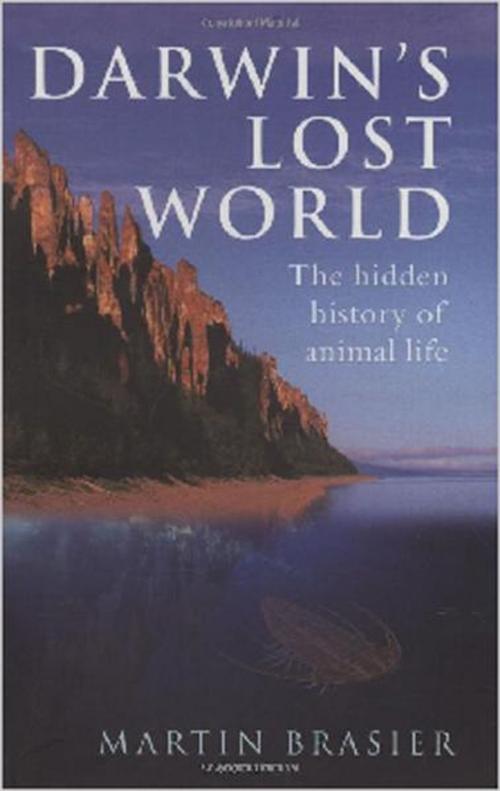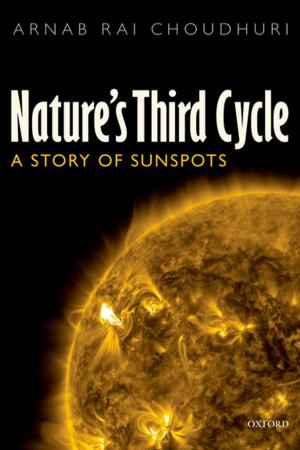Darwin's Lost World
The hidden history of animal life
Nonfiction, Science & Nature, Science, Earth Sciences, Palaeontology, Biological Sciences, Evolution| Author: | Martin Brasier | ISBN: | 9780191613906 |
| Publisher: | OUP Oxford | Publication: | March 11, 2010 |
| Imprint: | OUP Oxford | Language: | English |
| Author: | Martin Brasier |
| ISBN: | 9780191613906 |
| Publisher: | OUP Oxford |
| Publication: | March 11, 2010 |
| Imprint: | OUP Oxford |
| Language: | English |
Darwin made a powerful argument for evolution in the Origin of Species, based on all the evidence available to him. But a few things puzzled him. One was how inheritance works - he did not know about genes. This book concerns another of Darwin's Dilemmas, and the efforts of modern palaeontologists to solve it. What puzzled Darwin is that the most very ancient rocks, before the Cambrian, seemed to be barren, when he would expect them to be teeming with life. Darwin speculated that this was probably because the fossils had not been found yet. Decades of work by modern palaeontologists have indeed brought us amazing fossils from far beyond the Cambrian, from the depths of the Precambrian, so life was certainly around. Yet the fossils are enigmatic, and something does seem to happen around the Cambrian to speed up evolution drastically and produce many of the early forms of animals we know today. In this book, Martin Brasier, a leading palaeontologist working on early life, takes us into the deep, dark ages of the Precambrian to explore Darwin's Lost World. Decoding the evidence in these ancient rocks, piecing together the puzzle of what happened over 540 million years ago to drive what is known as the Cambrian Explosion, is very difficult. The world was vastly different then from the one we know now, and we are in terrain with few familiar landmarks. Brasier is a master storyteller, and combines the account of what we now know of the strange creatures of these ancient times with engaging and amusing anecdotes from his expeditions to Siberia, Outer Mongolia, Barbuda, and other places, giving a vivid impression of the people, places, and challenges involved in such work. He ends by presenting his own take on the Cambrian Explosion, based on the picture emerging from this very active field of research. A vital clue involves worms - burrowing worms are one of the key signs of the start of the Cambrian. This is fitting: Darwin was inordinately fond of worms.
Darwin made a powerful argument for evolution in the Origin of Species, based on all the evidence available to him. But a few things puzzled him. One was how inheritance works - he did not know about genes. This book concerns another of Darwin's Dilemmas, and the efforts of modern palaeontologists to solve it. What puzzled Darwin is that the most very ancient rocks, before the Cambrian, seemed to be barren, when he would expect them to be teeming with life. Darwin speculated that this was probably because the fossils had not been found yet. Decades of work by modern palaeontologists have indeed brought us amazing fossils from far beyond the Cambrian, from the depths of the Precambrian, so life was certainly around. Yet the fossils are enigmatic, and something does seem to happen around the Cambrian to speed up evolution drastically and produce many of the early forms of animals we know today. In this book, Martin Brasier, a leading palaeontologist working on early life, takes us into the deep, dark ages of the Precambrian to explore Darwin's Lost World. Decoding the evidence in these ancient rocks, piecing together the puzzle of what happened over 540 million years ago to drive what is known as the Cambrian Explosion, is very difficult. The world was vastly different then from the one we know now, and we are in terrain with few familiar landmarks. Brasier is a master storyteller, and combines the account of what we now know of the strange creatures of these ancient times with engaging and amusing anecdotes from his expeditions to Siberia, Outer Mongolia, Barbuda, and other places, giving a vivid impression of the people, places, and challenges involved in such work. He ends by presenting his own take on the Cambrian Explosion, based on the picture emerging from this very active field of research. A vital clue involves worms - burrowing worms are one of the key signs of the start of the Cambrian. This is fitting: Darwin was inordinately fond of worms.















